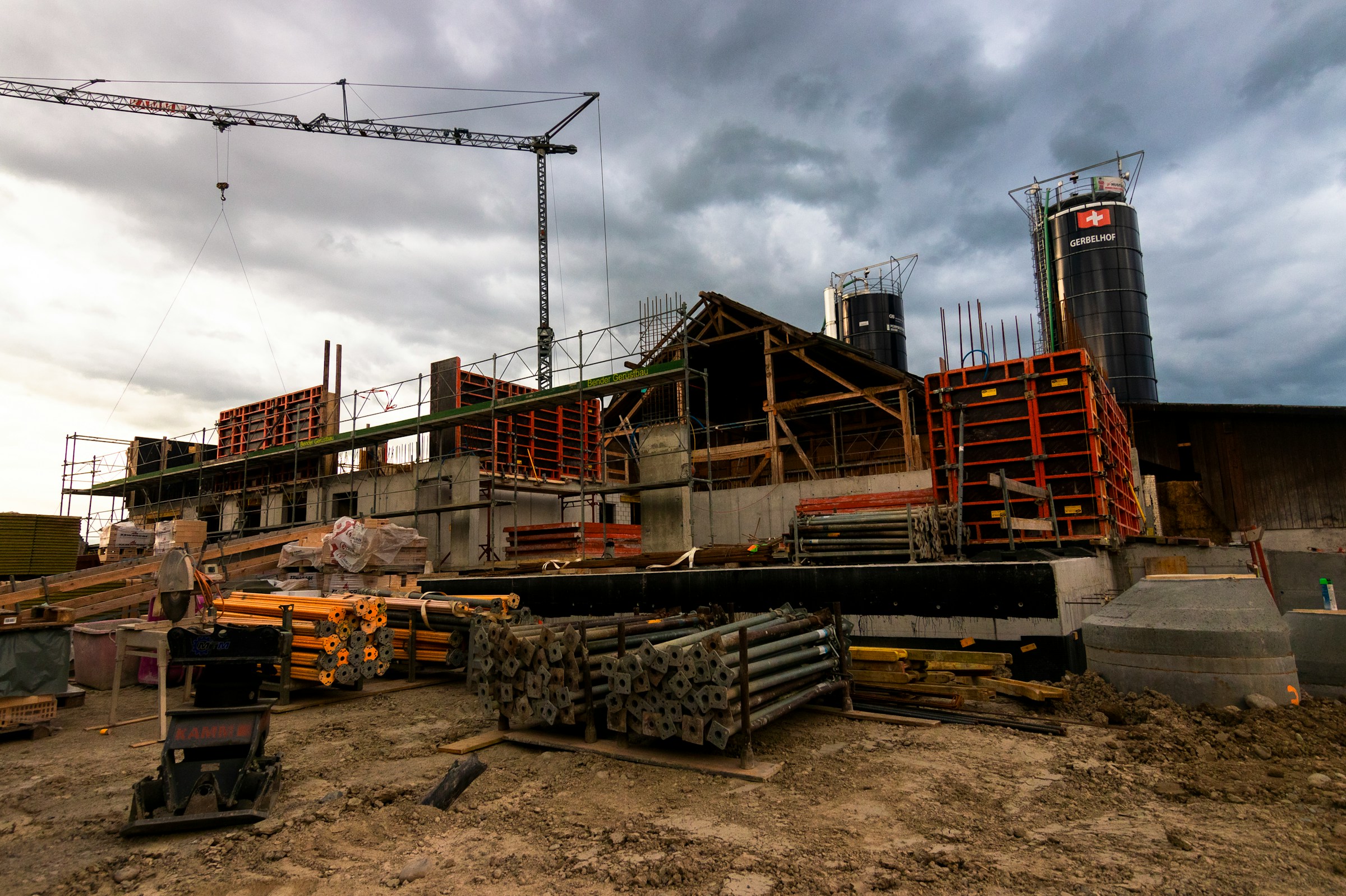The coastal environment presents unique challenges for construction, requiring careful selection of materials and design approaches to ensure building longevity. The combination of salt, water, and wind can lead to accelerated corrosion of materials, reducing the lifespan of structures and increasing maintenance costs. Thus, selecting the right materials and designs is crucial to ensuring a structure’s longevity and reducing its environmental impact. This article explores the key elements to consider when choosing materials for coastal construction, focusing on aspects such as concrete, metal, environmental considerations, corrosion, and cladding methods.
Durability of Concrete in Coastal Conditions
Concrete is a commonly used material in construction because of its strength and durability. However, its performance in coastal conditions requires careful consideration. The high salt content in coastal air can increase the rate of corrosion in reinforcing steel, leading to a phenomenon known as concrete cancer. This not only reduces the structural integrity of the building, but also increases maintenance costs.
Lire également : How to Use Decorative Features to Enhance Marketability in Budget Real Estate Listings?
To counter this, it’s recommended to use corrosion-resistant steel reinforcement. Alternatively, using concrete with high levels of supplementary cementitious materials like fly ash or slag can also improve durability. Waterproofing the concrete is another proactive measure to prevent salt ingress.
Additionally, the concrete mixture should be carefully designed to withstand the specific conditions of the coastal area. This includes considering factors like exposure to water, wind, and salt content in the air. A well-designed concrete mix can significantly improve the structure’s longevity.
A découvrir également : What Are the Best Investment Opportunities in UK’s Commercial Real Estate After the Pandemic?
Selection of Metal and Steel Structures
Metal structures, particularly those made of steel, are common in coastal construction due to their strength, flexibility, and ease of assembly. However, like concrete, metals are susceptible to corrosion in coastal environments. Salt in the air and water can accelerate the rusting process, significantly reducing the lifespan of metal structures and increasing maintenance requirements.
To counteract this, it’s recommended to use metals with high corrosion resistance. Stainless steel and aluminum, for example, have excellent corrosion resistance and are a popular choice for coastal construction. Moreover, protective coatings and treatments can be applied to metals to further enhance their corrosion resistance.
Another important factor is the design of the metal structure itself. It should facilitate water runoff and prevent the accumulation of salt and moisture, which could accelerate corrosion. Regular maintenance, such as cleaning and re-coating, should also be planned to prolong the life of the metal structures.
Environmental Considerations and Material Selection
Environmental considerations are paramount in the selection of construction materials. Using sustainable materials and construction methods not only reduces the structure’s environmental impact but can also enhance its durability and longevity.
For example, concrete with fly ash or slag, which are by-products from other industries, can improve concrete’s durability and reduce its carbon footprint. Similarly, metals like aluminum and steel are highly recyclable, making them environmentally friendly options.
Additionally, the design should aim to minimize the building’s energy consumption, which can be achieved through methods like passive solar design or incorporating renewable energy systems.
Managing Corrosion in Coastal Construction
Corrosion is a major concern in coastal construction, as salt, water, and humidity can rapidly degrade various materials. Consequently, it’s crucial to implement measures to manage and mitigate corrosion.
Besides using corrosion-resistant materials, protective coatings and treatments are often employed. These can range from paints and sealants to more advanced options like cathodic protection, which uses electrical currents to counteract the corrosion process.
Regular inspection and maintenance are also vital in managing corrosion. This involves checking for signs of corrosion, cleaning surfaces to remove salt and moisture, and reapplying protective coatings as necessary.
Cladding Methods for Coastal Conditions
Cladding provides an additional layer of protection to the structure, helping to shield the underlying materials from the harsh coastal conditions. The choice of cladding material can significantly impact the building’s durability and maintenance requirements.
Aluminum and stainless steel are popular choices for cladding due to their corrosion resistance. However, other materials like fiber cement or certain types of wood can also be suitable, provided they are properly treated and maintained.
The design of the cladding system is equally important. It should facilitate water runoff, prevent moisture retention, and be robust enough to withstand the high winds often experienced in coastal areas. Proper installation is essential to ensure the cladding performs as intended, providing a long-lasting, durable shell for the building.
Incorporating Eco-Friendly and Cost-Effective Building Materials
With growing concerns about the planet’s well-being, the construction industry is gradually shifting towards more eco-friendly and sustainable practices. This includes using eco-friendly materials that have a smaller environmental impact, and also contribute to the durability and longevity of coastal structures.
Reinforced concrete is an example of a cost-effective and eco-friendly material that is commonly used in coastal construction. It is made by combining concrete with steel reinforcement, creating a strong material that can withstand harsh weather conditions. However, as mentioned earlier, the corrosive effect of salt can lead to concrete cancer, so the use of corrosion-resistant steel is crucial.
In addition to reinforced concrete, there are other eco-friendly building materials that can be used in coastal structures. For instance, incorporating recycled steel or aluminum can help reduce the construction industry’s carbon footprint while providing a high-quality, long-lasting material for construction.
Furthermore, the use of reclaimed or sustainably sourced wood can also be a viable option. Although wood is not as durable as some other materials, it can be treated to resist the harsh coastal conditions, making it a viable option for certain aspects of construction.
The key is to balance between environmental responsibility and the need for durability and longevity in coastal structures. It is crucial to select materials that are not only environmentally friendly, but also durable and suitable for the unique challenges posed by coastal regions.
Conclusion: The Importance of Material Selection in Coastal Construction
In conclusion, the selection of construction materials for coastal areas is a complex process that requires careful consideration of various factors. The unique challenges posed by coastal regions, such as the presence of salt, water, wind, and harsh weather conditions, can considerably impact the durability and longevity of structures. Therefore, prioritizing corrosion resistance, whether in concrete structures or metal cladding, is vital to ensure the long-term viability of coastal structures.
The use of high-quality, corrosion-resistant materials can significantly reduce maintenance costs and enhance the lifespan of coastal buildings. However, it is equally important to consider environmental factors. The construction industry has a significant environmental impact, so using eco-friendly, recycled, or reclaimed building materials can help reduce that impact while still ensuring the durability of buildings.
The coastal environment is unforgiving, but with careful material selection and thoughtful design, it is entirely possible to construct long-lasting, durable structures that can withstand the test of time. Regardless of the material chosen, regular maintenance and inspection remain pivotal to managing corrosion and ensuring the longevity of coastal structures. Planning for these considerations from the outset can lead to high-quality coastal structures that are not only cost-effective but also environmentally friendly.






